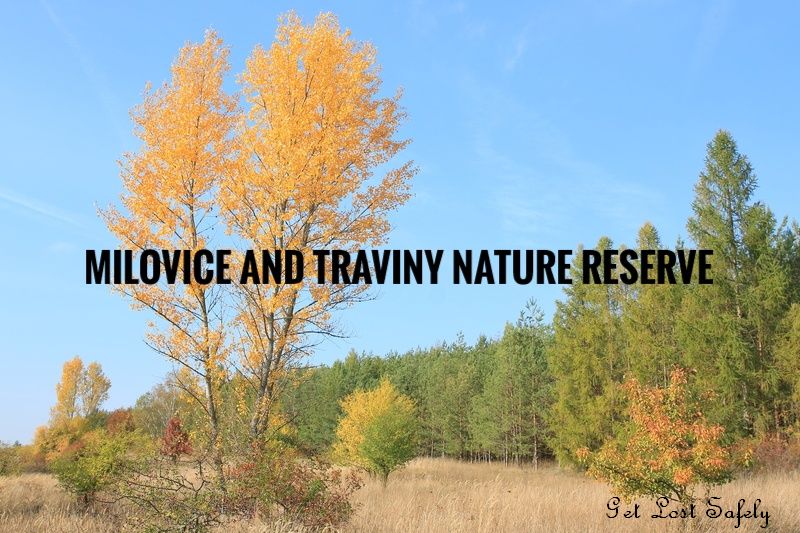Hi everyone. How are things going? It’s been a long time since the last time I wrote an article on Get Lost Safely. Lots of things have happened and I got too busy at the University. Less traveling and more studying, yet life goes on. This time I would like to share an experience from our school visit to two nature reserves in Czech Republic, Milovice and Traviny Nature Reserve. Places for conservation of several unique species in Europe.
General Overview
Last year through the course Resource Ecology: soil-plant-animal interactions, we visited two nature reserve in Czechia, Milovice Nature Reserve and Traviny Nature Reserve. Those nature reserves are former military sites. After some detrimental effects to the environment in the past, it is now home for several species of animals and plants.
Its History
In 2015, Milovice started its journey as a Nature Reserve with an area of 40 ha. Later on, in August 2018, the area increased to 120 ha. Meanwhile, Traviny Nature Reserve with the area of 120 ha became a nature reserve in 2016.
There are three main herbivores that are grazing in Milovice and Traviny. Do you know that herbivores are important on nursing the ecosystem? Their importance as the first consumer is often neglected. Nonetheless, they are the landscape transformer. Herbivores consume plants and process it to faeces, a natural fertilizer.
Herbivores are Important
Thus, the entire ecosystem is formed and very well maintained. It also supports the livelihood of other plants and animals living in the nature park. Their role in the ecosystem increases the species diversity in the nature reserve. Some species can only live in certain condition that is provided by the herbivores (for example, in dungs). In addition, utilizing herbivores to graze is free, more economical and ecologically friendly. Compare this to cleaning a field using a lawn mower or any other machinery that needs fuel.
In Milovice and Traviny Nature Reserve, you can observe three large ungulates living in one area and how they put on use the resources available. You can also learn about their niche apportionment. An interesting way of seeing how different species use the resources which will determine the distribution of individuals and the species.
Condition and situation in both nature reserve is strived to remain as natural as possible. Human intervention is also sought at the minimum level. The animals are living wild in the nature reserve without additional food. However, there is no natural water source in Milovice as such a river or creek. Therefore, the nature reserve provides artificial wells as water source. Else, they also equip salt lick as a source of minerals and shelter when the weather goes bad for wild horses.
Large Ungulates in Milovice and Traviny Nature Reserve
Three species of large ungulates live in Milovice and Traviny Nature Reserve, wild horse, auroch and European Bison. Let’s take a closer look on them one by one.
Wild Horse
This animal is probably one of the most familiar animals for us. The beginning of agriculture and domestic ungulates such as cow have been shifting wild horse’s existence in Europe. The absence of wild horse from a habitat has bad impacts to the environment. As mentioned before, herbivores as primary consumers in trophic level are crucial to keep the ecosystem stability.
You remember about trophic level from biology class, don’t you? Trophic level related to feeding strategies of animals. Disturbance on animals at the base of trophic level will alter the whole system, including human being. Introduction of wild horses to Milovice and Traviny Nature Reserve should be appreciated.
Milovice Nature Reserve is the first in Czech Republic, in Central and East Europe which has wild horses.
Auroch
Auroch is the ancestor of domestic cow we have now. In fact, Auroch is extinct. Those individuals in nature reserves are the work of technology referred to as back-breeding. Bred and chosen to achieve the characteristics and physical appearance that resembles the original Auroch.
The last original Auroch in Europe died in Poland in 1627. It is possible that this species became extinct from the Czech mainland in the middle age, or around the 15th century. Since 2008, the Dutch Taurus Foundation has been working with Wageningen University in the Netherlands to bring back a species that looks the same as an extinct Auroch.
European Bison
Unfortunately, we did not meet the European bison during this field trip. Therefore, no photos can be captured. European bison is the largest wild vertebrate that lives on land. Male European bison can reach a weight of 920 kg and 540 kg for female European bison. In 2018, there were 1 male, 12 female bison and 8 calves in Traviny Nature Reserve.
More photos from Milovice and Traviny Nature Reserve.
